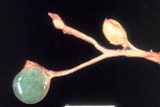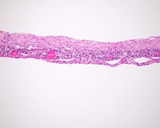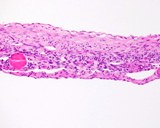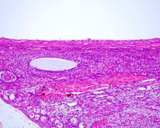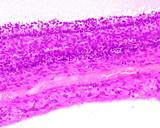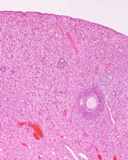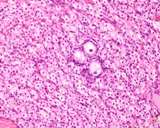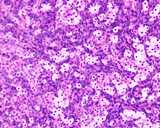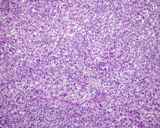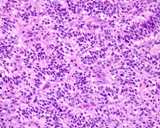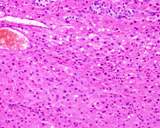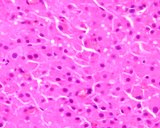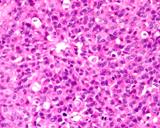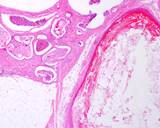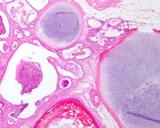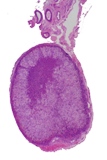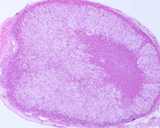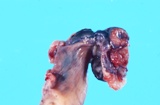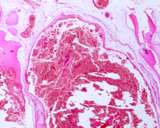These are very common in cats. and are detailed in Disorders of Sexual Development in cats
There are 3 parts to the rete ovarii - the intraovrian rete, the extraovarian rete, and a connecting rete. The rete are supposed to have a secretory activity. The intraovarian rete is supposed to be noncilited, whereas the connecting rete is lined by ciliated epithelial cells.
Cystic rete ovarii are when the rete ovarii become distened with fluid. It would be expected that the rete would enlarge with age, as the remnants are supposed to be secretory, and as an extension to this, all old cats should have cystic rete. This is not the case! They occur in young as well as old cats (McEntee 1990)
Rete cysts are thin walled structures that occur within the ovary and displace ovarian tissue peripherally. They can be up to 2.5 cm diameter. They are lined by a flattened single layer of epithelium. A thin layer of connective tissue is at the periphery, and this included compressed ovarian stroma.
Gelbert et al (1984) described cystic rete ovarii in 20 cats. The cysts were within the ovary or at the tubal extremity of the ovary. The cyst lining was variable - they were single or multilayered, cuboidal to columnar, ciliated and nonciliated, or combinations of these.
Figure : Unilateral cystic rete ovarii.
Figure : Cystic rete ovarii. Wall of cyst.
Figure : Cystic rete ovarii. Wall of cyst has this layer of epithelium then compressed collagen and ovarian stroma.
Gelberg HB, McEntee K, Heath EH (1984) Feline cystic rete ovarii. Vet Pathol 21: 304-307
McEntee K (1990) Reproductive Pathology of Domestic Mammals. Academic press p61
